
In 2020, the coronavirus pandemic made a tremendous impact in the U.S. and altered many aspects of life worldwide.
Facility and property managers, as well as building owners, face significant challenges based on the infectious nature of the virus, financial consequences, and more.
Adherence to EPA, OSHA, and CDC guidelines is critical to preventing COVID-19 from spreading and effective disease control in commercial workplace environments.
How drastically has COVID-19 disrupted our overall organizational setting? Unemployment rates rose to levels unseen since back in 1948, as they peaked in April 2020 at roughly 14.8%.
Aside from losing more than one of every seven employees, approximately 35% began working from a remote setting.
Many of those who were working in office buildings and other group and shared settings left their normal workplace.
As we continue to “reopen” American workplaces, protocols for limiting pathogens are critical for facility and property managers.
Commercial cleaning and disinfection services must be part of a core facility management plan.
Here, we will address many key aspects related to safe commercial disinfecting practices in the COVID era.
Health and Safety Considerations for Commercial Properties and Facilities

Employees should have access to sufficient supplies of personal protective equipment.
Examples include disposable gloves, facial coverings (masks) and, cleaning supplies for use when needed.
One of the other core considerations for an employer is ensuring that their workforce is informed of the best practices.
Despite widespread public health campaigns and community awareness, some people still lack an understanding of how COVID-19 is transmitted.
Commercial real estate managers are encouraged to implement an educational plan that is multi-faceted.
Posters and signage can be placed in high-traffic areas to enhance the overall awareness among occupants.
Posted signage and information regarding best practices should contain visual images when possible.
Employers may consider incorporating education and guidance regarding COVID-19 into both their initial and ongoing training programs.
Consider distributing handouts or brochures that contain best practices from the CDC, EPA, and other health agencies.
Amid this pandemic, building occupants must know the importance of staying home if they feel ill.
It is not worth taking a risk of spreading the virus to others.
Discourage occupants from shaking hands or initiating other forms of physical contact.
Responsibilities of Commercial Facility and Property Managers

Professional commercial property managers face comprehensive challenges in responding to COVID-19.
Heating, ventilation, and air conditioning (HVAC) systems must be properly functioning and maintained.
The CDC created a COVID-19 information guide that encourages increasing fresh outdoor air and opening windows when possible.
Facility and property managers should identify any potential areas of concern regarding compliance with social distancing guidelines, such as enclosed elevators.
Employees should have workspaces that allow a minimum separation of 6-feet.
Other areas of concern include enclosed areas such a meeting or break rooms, lobby or waiting areas, stairways, and more.
In work environments that are not conducive to allowing for 6-feet of distance, physical barriers or shields should be considered.
They encourage using creative ways to reduce the number of people working close to one another.
Examples might include adjusting shifts or start times.
Shared features such as coffee stations and drinking fountains should be temporarily shut down. Consider increasing the capabilities of indoor air filtration systems when possible.
Encourage rules related to facial coverings (masks) and washing hands.
All high-touch surfaces should be regularly disinfected with proper disinfectants including light switches, doorknobs, keyboards, and faucets.
COVID-19 Best Practices
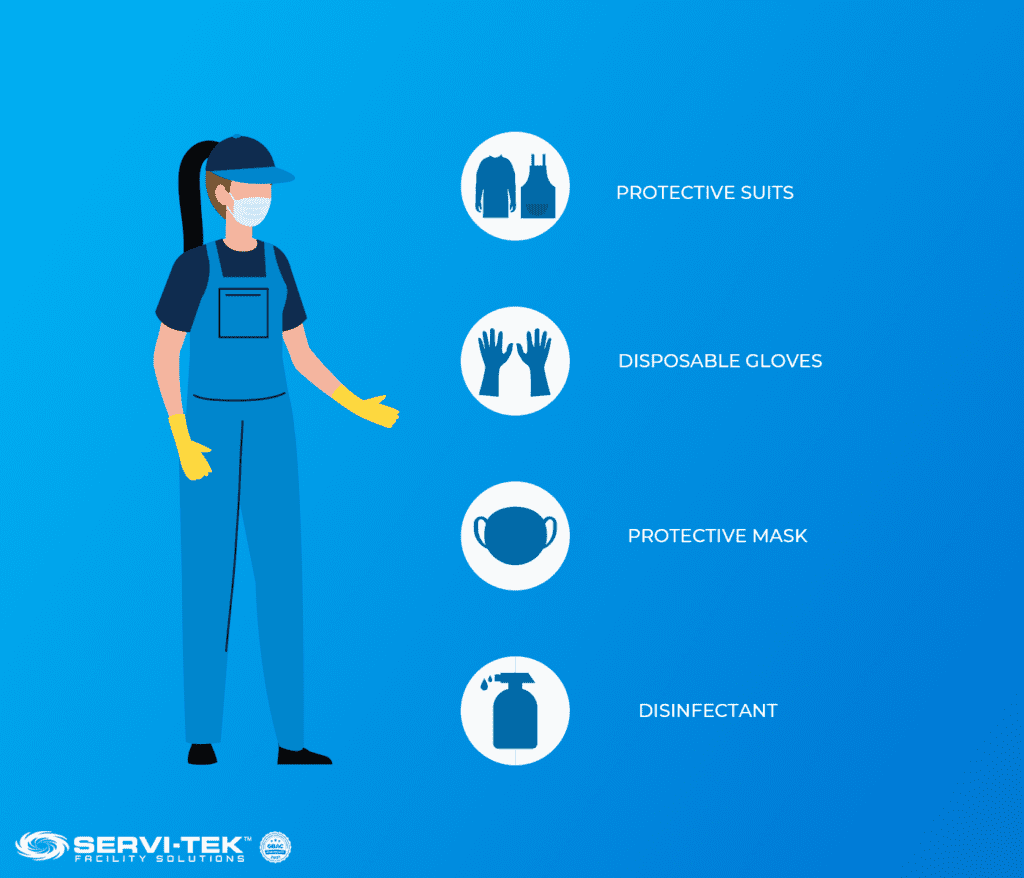
Facility and property managers are often preoccupied with the safety concerns related to tenants, employees, visitors, etc.
It is also important to also consider the safety of those who perform the cleaning and disinfection.
These are individuals such as members of the janitorial or custodial staff.
Workers who execute these functions should be well-equipped with personal protective equipment (PPE) and provided comprehensive training protocols to safely perform the work.
Staff must remember to read caution or warning labels and be encouraged to ask if they have any uncertainties.
Are you making changes to the existing (Pre-COVID) cleaning practices or considering new methods to add to the regular plan?
It is important to acknowledge the primary way that the virus is transmitted.
The virus is usually spread in droplets of saliva or nasal discharge, exacerbated through coughing or sneezing.
In developing your plan, you must assess the unique physical property layout to determine key areas of potential transmission. Next, it is critical to choose the best products for safely and effectively disinfecting.
The EPA has a complete list of all disinfectant options which are certified to effectively kill SARS-CoV-2, the virus which causes COVID-19.
It is also important to decide the frequency for completing disinfections.
For example, high-traffic areas of the property may need to be disinfected at regular intervals during business hours.
Outdoor locations may require less frequent disinfection.
Exceptions may include frequently touched exterior door handles or activation devices.
Food service establishments with outdoor seating should consult with current local, state, and federal guidelines.
Understanding the way that the virus is transmitted is critical to prevention.
COVID-19, similar to measles or tuberculosis, is commonly spread through the air.
When an infected person sneezes or coughs, millions of very small microbes are released into the air.
Although our bodies are regularly exposed to various microbes, those that may cause disease are known as pathogens.
Microbes must enter the body to cause infection and COVID-19 commonly occurs by breathing in these airborne pathogens.
This is the reason for encouraging the use of facial coverings when developing a truly comprehensive workplace prevention plan.
Cleaning vs. Disinfection vs. Sanitization

The coronavirus can survive on most types of objects or surfaces for hours or days.
Exposure to sunlight and warmer temperatures have proven to decrease the time the virus can survive.
Temperature or sunlight alone is not intended to be a replacement or substitute for regular cleaning and disinfection practices.
Those who oversee commercial cleaning protocols should understand some basic terminology associated with killing pathogens.
Cleaning refers to the physical removal of viruses, bacteria, and other unwanted items, typically using soap and water.
Disinfection is a process that implies using a germ-killing chemical but does not necessarily remove dirt, etc.
Sanitization refers to eliminating germs to a level considered to be safe by public health agencies.
All occupants and guests of commercial facilities should be educated regarding the importance of hand cleaning.
If hands are dirty, they should first be cleaned with soap and water for more than 20 seconds.
People without immediate access to a hand-washing location can use an alcohol-based product for sanitizing.
Property and facility managers may consider installing a hand sanitizing unit in areas with limited access to a sink for handwashing.
Individuals should also be encouraged to carry a hand sanitizing product with them for fast disinfection as needed.
Methods of Cleaning and Disinfecting

The CDC guidelines outline six key considerations for safely and properly disinfecting a workplace environment:
- Ensure the product is EPA-approved for use with coronavirus (see EPA N List)
- Read and understand the directions for proper usage and any safety instructions
- Pre-clean the surface that will be disinfected using soap and water, particularly when the dirt is visible
- Based on the instructions, allow the disinfectant to remain on the surface for the specified time (to dwell)
- Always wear gloves, allow for sufficient ventilation, and be sure to wash your hands
- Store unused disinfectants in a safe location and avoid any interactions among different products
Choosing a Disinfectant
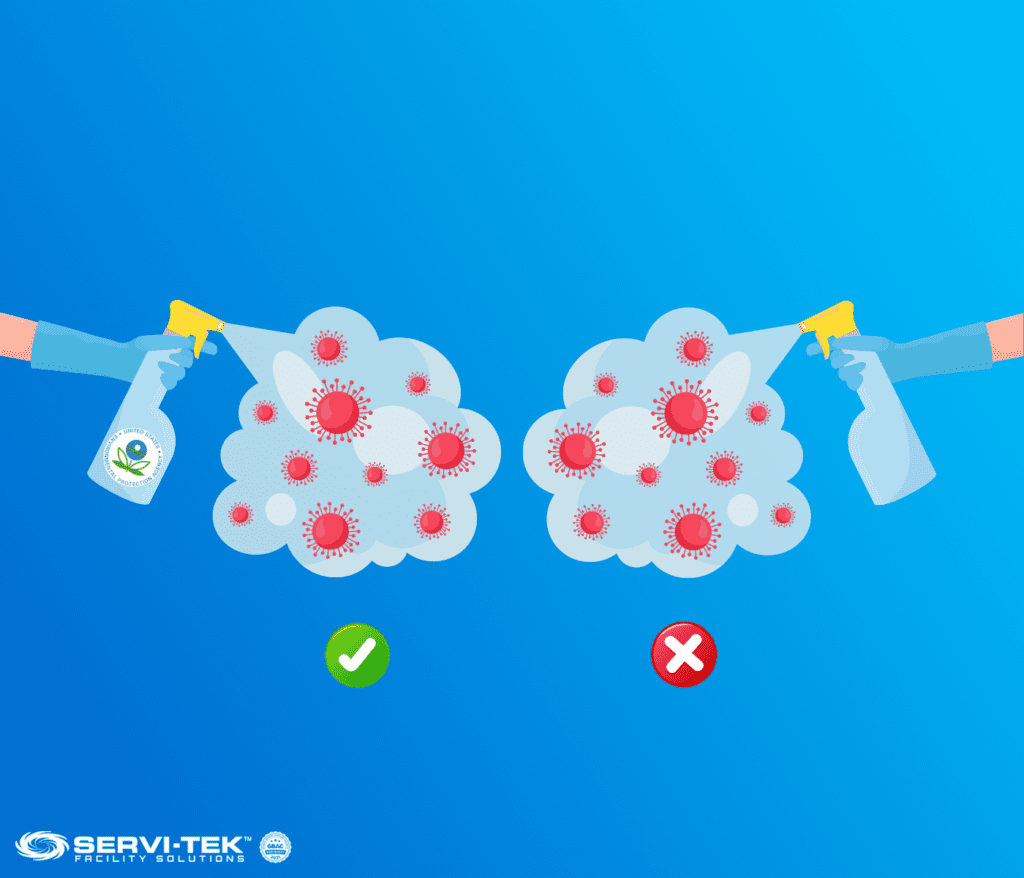
Many different factors may also be considered when choosing agents for disinfecting your workplace in addition to EPA approval.
You should determine that the product(s) you choose are readily available and not in short supply.
For example, the CEO of Clorox revealed that they have been unable to meet the demand for their disinfectant wipes.
Keep in mind that products in short supply are likely to also be more expensive compared to alternate options.
Facility and property managers must determine the amount of product needed by calculating their projected usage of each to accurately compare.
Also, look for products that might be available at a reduced price when purchased in larger quantities.
The EPA List N contains only products that have proven to kill the coronavirus SARS-CoV-2 when used as instructed.
Approved disinfectants will always have an EPA registration number on the product label that should be used to verify.
Other agencies do have lists of products proven to be effective against COVID-19 that have an alternative brand name.
Electrostatic Disinfection Spraying
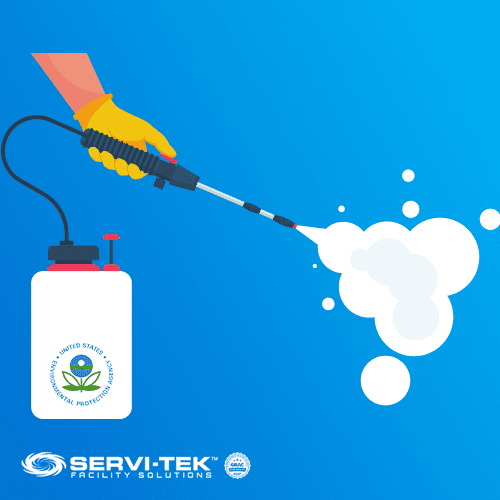
Another common category of products within the EPA List N are those applied using spray equipment.
Terms that you will recognize used to describe these options include fog, mist, or electrostatic.
Fog or mist products are applied using a traditional spray bottle or may already be contained in an aerosol can.
Disinfectants or sanitizers are applied using an electrostatic spray pass through an electrode inside the nozzle that positively charges the liquid.
The fine spray attaches to negatively charged surfaces.
Most commonly used by professional cleaning companies, electrostatic sprayers offer a very uniform application of the disinfecting agent.
They are great for usage in areas such as bathrooms or hard-to-reach places that might not be covered and can disinfect large areas efficiently.
Disinfection of Contact Surfaces
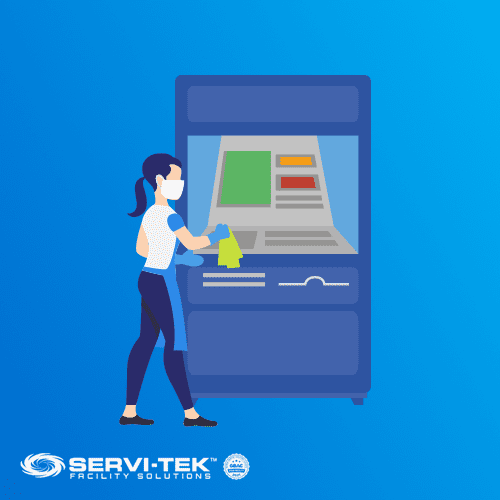
When disinfecting surfaces, technicians should either use a new pair of disposable gloves or reusable gloves dedicated for this purpose.
Some common surfaces are often mistakenly overlooked in property disinfection plans.
Examples include pens used at sign-in desks, vending machines, ATMs, and point-of-sale or access control equipment.
The amount of disinfectant to use is generally specified on the product label.
Using slightly more than the instructed amount is usually not a major safety concern.
Using less than the amount required can be a significant problem if insufficient to thoroughly kill harmful viruses and bacteria.
In all cases, it is critical to allow disinfectants to remain on the surface for a time period specified by its manufacturer.
This “contact” or “dwell” time is typically sufficient for pathogen elimination in most cases.
As with many cleaning and disinfection agents, proper ventilation is important following the application.
Disinfecting Upholstered Furnishings
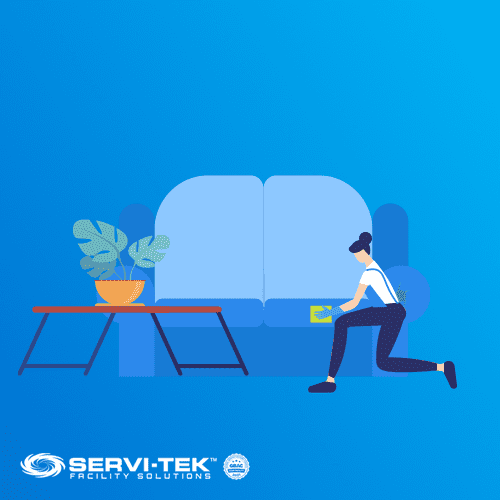
Soft or absorbent materials can be more challenging to disinfect, particularly without harming the material.
The EPA has several approved products specifically for soft or porous material surfaces, such as foaming cleaners.
Materials such as leather should be cleaned using a product intended for this surface.
Disinfection After a Suspected or Confirmed Case of COVID-19
The CDC has a designated set of guidelines for disinfection of a facility or area following the known or suspected existence of COVID-19.
They recommend initially “closing off” or sealing the area of the facility involved.
Attempt to introduce fresh outdoor air to the area by opening doors or windows, usage of fans, or other methods.
Follow the cleaning and disinfection guidelines for the area and the workspace of someone diagnosed with COVID-19.
Application of a disinfectant on the EPA’s List N via electrostatic spraying is preferable to insure all relevant surfaces are addressed.
If possible, use a vacuum device that features a HEPA (particulate air) bag and filter.
If seven days pass since an individual with COVID has been present, these additional measures are not necessary.
The Best Provider of Commercial Disinfecting Services
Property and facility managers may find that maintaining compliance with COVID-19 is an overwhelming challenge.
One potential solution is to consult with a commercial cleaning company that has the experience, knowledge, equipment, and trained personnel.
During a consultation, a professional representative can assess your specific commercial asset and propose a comprehensive solution.
The seasoned team at Servi-Tek Facility Solutions has been delivering high-level customer satisfaction for many years now.
Our specialists provide full-service commercial cleaning, janitorial, and engineering services, as well and other facilities management solutions.
We remain current on all the latest procedural guidelines from the CDC, WHO, and other agencies and offer advanced electrostatic disinfection spraying service that is rated at Biosafety Level 3 (BSL-3).
We look forward to discussing this and other innovative services with you soon.




